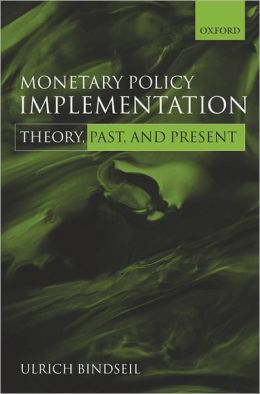One of the lingering questions I have regarding the interbank rate models I've reviewed concerns whether or not they need to address the issue of how exactly reserves enter the interbank market. The models I reviewed so far seem to assume that there is essentially a "helicopter drop" of reserves into the banking system. At least Woodford's model appears that way. Consider that model's cost function of refinancing with reserves: C(sj) = isj – iBEj[min(sj+ εj,0)] – iDEj[max(sj+ εj,0)]. Reserves can only be borrowed or lent at the interbank rate, i, during the interbank market session. There is no repurchase agreement (repo) rate to be found, for example.
In a sense, this is somewhat accurate if all open market operations (OMOs) are conducted with non-bank dealers. In this scenario, banks passively accept reserves when non-bank dealers trade their bonds to the Treasury for deposits. But even then, one has to wonder whether the repo rate at which those transactions occur, or the prevailing repo rate in general, affects the interbank rate in some way. Secondly, to my knowledge, not all OMOs in the U.S. are conducted with non-bank dealers. I'd be curious if a reader knew the ratio of bank vs. non-bank OMO purchase volumes (I'm sure this varies across countries).
Hopefully, I can figure out answers to these questions, as they seem essential to acquiring a rigorous understanding of the linkages of funding rates within the economy. I believe Bindseil touches on this in his book, which I'll continue digging through, among other sources.
P.S. I'm using the term "helicopter drop" in a slightly different way it's typically used, which is in the context of (unconventional) monetary policy stimulus. Here, I'm simply considering the mechanisms by which reserves usually enter the banking system - that is, not against the backdrop of unconventional monetary policy ideas.
In a sense, this is somewhat accurate if all open market operations (OMOs) are conducted with non-bank dealers. In this scenario, banks passively accept reserves when non-bank dealers trade their bonds to the Treasury for deposits. But even then, one has to wonder whether the repo rate at which those transactions occur, or the prevailing repo rate in general, affects the interbank rate in some way. Secondly, to my knowledge, not all OMOs in the U.S. are conducted with non-bank dealers. I'd be curious if a reader knew the ratio of bank vs. non-bank OMO purchase volumes (I'm sure this varies across countries).
Hopefully, I can figure out answers to these questions, as they seem essential to acquiring a rigorous understanding of the linkages of funding rates within the economy. I believe Bindseil touches on this in his book, which I'll continue digging through, among other sources.
P.S. I'm using the term "helicopter drop" in a slightly different way it's typically used, which is in the context of (unconventional) monetary policy stimulus. Here, I'm simply considering the mechanisms by which reserves usually enter the banking system - that is, not against the backdrop of unconventional monetary policy ideas.



